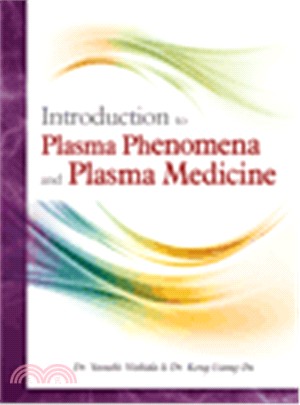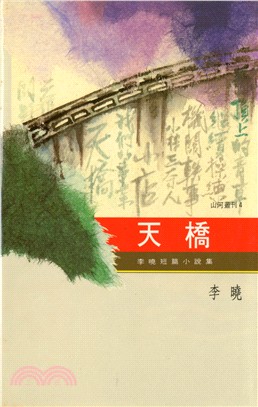Introduction to Plasma Phenomena and Plasma Medicine
商品資訊
商品簡介
In Chapter 1, and through Chap. 4, what is the plasma is introduced by explaining terrestrial, space and astrophysical phenomena as well as artificially produced ones. These phenomena are easy to see or be made in daily life. In other words, plasmas are quite popular phenomena. The key techniques for keeping plasma in clean vessel are discussed by explaining the vacuum system. The standard diagnostic methods for obtaining plasma characteristics are also explained.
From Chapter 5, and through Chap. 7, main parts of this book are described, including the application of plasma phenomena to the material processing, energy and environmental fields, medical fields, and the combined area of these fields. The controlled thermonuclear fusion is strongly anticipated phenomena for the future energy source. The nuclear fusion, however, has vast variety of engineering tasks and fields, but this book cannot cover entire subject with respect to nuclear fusion physics and engineering. Another advanced energy source is the high energy particle beam source. With help of plasma, this system is expected to become quite small, typically 1/1000, compared with the present high energy particle accelerators. Wide variety of applications to the environmental fields such as exhaust gases treatments are also introduced.
On the other hand, fresh plants require a lot of carbon dioxide, CO2, as well as sun light. As a new technique for recycling of CO2, this gas is introduced into the greenhouse for cultivation of plants. Sterilization with use of plasma is one of other key techniques, by producing ozone in the oxygen. However, ozone is very toxic and it is not good in surrounding of human, and other nontoxic method is introduced.
The applications of plasma to the medical fields have wide variety of fields, such as surgery, surface coating of the materials used within human body and many others. In the plasma surgery, for example, damages on the surround cells of the body are quite limited compared with use of metal surgery knives. The plasma medicine is an innovative and effective for therapeutic and surgery applications in the future.
作者簡介
Yasushi Nishida
Professor Yasushi Nishida received the B.S., M.S., and Ph.D. degrees in Electronic Engineering from Tohoku University, Sendai, Japan. He was with Utsunomiya University, Utsunomiya, Japan since 1973. He was the Dean of the Faculty of Engineering and Graduate School of Engineering, and also a Trustee and Vice-President from 2004 to the end of March 2007. He has also worked in the capacity of Director of Cooperative Research Center of Utsunomiya University and Director of the Institute of Electrical Engineers of Japan, Tochigi branch. He is currently a professor with National Cheng Kung University, Taiwan. He is a Professor Emeritus with Utsunomiya University and an Honorary Professor with University of Electronic Science and Technology of China, Sichuan, China and also with Zhejiang University of Technology, Zhejiang, China. He has been a pioneer in the world of the experimental researches on the plasma-based accelerator phenomena by employing high-power microwaves or ultra-short high-power lasers. He is currently involved in the application of pulsed discharge source for production of hydrogen fed directly to fuel cell on the vehicle. He is also involved in disinfecting the contaminated air with use of plasma. He was awarded The Commendation for Science and Technology by the Minister of Education, Culture, Sports, Science and Technology, Japan. Prizes for Science and Technology in Research Category on “Discovery of Particle Acceleration by Plasma and Investigations on the Ultra-Small Accelerators” on April 11, 2011 and many others. Prof. Nishida was elected as a Fellow of the American Physical Society in 1992.
Keng-Liang Ou
Professor Keng-Liang Ou obtained his Ph.D. degree from Graduate Institute of Mechanical Engineering, National Chiao Tung University, Taiwan. He joined Taipei Medical University to pursue the cutting-edge research of biomaterials. He is also the Director of Research Center for Biomedical Implants and Microsurgery Devices and the Director of Research Center for Biomedical Devices and Prototyping Production. Besides institutional appointment, Prof. Ou serves as the President of Institute of Plasma Engineering in Taiwan, the Director of the Taiwan Society for Metal Heat Treatment, the President of Taiwan Oral Biomedical Engineering Association and the Director of Yongee Anti-cancer Foundation. Professor Ou devotes himself to the novel research in the fields of biomaterials, bioengineering, biosensing, bioimaging, and translational medicine. In addition, he establishes extensive collaborations with industry and has played a leading role in developing medical devices for health professionals worldwide. He is the leader and organizer for the biomedical product design, production, manufacturing, testing, legalization and market planning, with supports from teams of scientists and researchers with expertise in different fields. With the outstanding accomplishments in research and invention, Professor Ou received the Award of the Ten Outstanding Young Persons of Taiwan in the year of 2011 and the TMU Distinguished University Professor Award in 2014. Today he is CEO of 3D Global Biotech Inc., which is a spin-off company from Taipei Medical University.
目次
Chapter 1 What is Plasma?
1.1 Introduction
1-1-1 Fluid model
1-1-2 Kinetic model
1-2 Artificially-Produced Plasma
1-2-1 Plasma displays
1-2-2 Fluorescent lamps and neon signs
1-2-3 Industrial application
1-2-4 Fusion energy researches
1-3 Terrestrial Plasma
1-3-1 Lightning
1-3-2 Sprites
1-3-3 St. Elmo’s fire
1-3-4 The polar aurora, northern lights
1-4 Space and Astrophysical Plasma
1-4-1 The Sun and other stars
1-4-2 The solar wind
1-5 Definition of Plasma and Fundamental Characteristics
1-5-1 Plasma properties and parameters
1-5-2 Comparison of plasma and gas phases
1-6 Complex Plasma Phenomena
1-6-1 Filamentation
1-6-2 Shocks or double layers
1-6-3 Cellular structure
1-6-4 Electric fields and circuits
1-6-5 Critical ionization velocity
1-6-6 Ultracold plasma
1-6-7 Non-neutral plasma
1-6-8 Dusty plasma and grain plasma
Chapter 2 Methods for Plasma Production
2-1 Basic Mechanism of Plasma Production
2-1-1 Townsend discharge and discharge start voltage
2-1-2 Self- sustaining discharge voltage
2-1-3 Structure of glow discharge
2-1-4 High frequency discharge
2-2 Plasma Production in Low Gas Pressure
2-3 Plasma Production in High Gas Pressure
2-3-1 Corona discharge
2-3-2 Electric spark
2-3-3 Dielectric barrier discharge
2-4 Plasma Production by Lasers
2-4-1 Introduction to physics of lasers
2-4-2 Types of lasers
2-4-3 Plasma production by lasers
2-4-4 Laser classifications
Chapter 3 Key Techniques for Plasma Production
3-1 Vacuum Technology
3-1-1 Definition of vacuum
3-1-2 Necessity of ultra-high vacuum (UHV)
3-1-3 The mechanism of the vacuum pump operation
3-2 Vacuum Theory Using Ideal Gas Properties
3-2-1 Collision parameters
3-2-2 Three regions of gas flow
3-2-3 Molecular transport and pumping laws
3-2-4 Pumping law in the high and
ultra-high vacuum regions
3-3 Practical Vacuum Techniques
3-3-1 Transfer or rotary pump
3-3-2 Diffusion pumps
3-3-3 Turbomolecular pumps
3-3-4 Sorption pump
3-3-5 Simplified vacuum system design
3-3-6 Summary of vacuum pumps and their characteristics
3-4 Vacuum Measuring Technique
3-4-1 Manometer
3-4-2 Membrane gauge
3-4-3 Electronic gauge
Chapter 4 Plasma Diagnostics
4-1 Langmuir Probe Method
4-1-1 Single probe [1,2]
4-1-2 Emissive probe
4-1-3 Double probe [4,5]
4-1-4 Triple probe [6]
4-1-5 High frequency resonance probe
4-1-6 Ion sensitive probe
4-2 Microwave Interferometry and Reflectmetry
4-2-1 Plasma density measurements by microwave interferometry
4-2-2 Plasma density measurement by microwave reflectometry
4-2-3 Laser interferometry
4-3 Spectroscopy
4-3-1 Refraction of light
4-3-2 Spectroscopy
4-3-3 Instruments
4-3-4 Measurement process
4-3-5 Measured physical quantity
4-4 Laser Spectroscopy
4-4-1 Thomson scattering [18]
4-4-2 Stark effect [19]
4-4-3 Zeeman interaction [19]
Chapter 5 Plasmas for Material Processing
5-1 Low Temperature Plasmas
5-1-1 Plasma CVD and its characteristic feature
5-1-2 Plasma source for plasma CVD
5-1-3 Some examples of application of plasma CVD
5-2 Thermal Plasma
5-2-1 DC arc plasma
5-2-2 RF torch plasma
5-2-3 Microwave torch plasma
Chapter 6 Applications to Energy and Environmental Fields
6-1 Inroduction
6-2 Light Source and Display Systems
6-2-1 Light sources
6-2-2 Plasma display [3,4]
6-3 Controlled Thermonuclear Fusion for
Future Energy Sources
6-3-1 Principle of thermonuclear fusion
6-3-2 Fusion devices and experimental
results216
6-3-3 Fusion sites and international
collaboration
6-4 Particle Beam Source
6-4-1 Ion beam source
6-4-2 Neutral beam source
6-5 High Energy Particle Accelerator
6-5-1 High energy particle accelerator
6-5-2 Principle of charged particle acceleration
6-5-3 Vp×B acceleration (Surfatron)
6-5-4 Plasma beat wave accelerator
6-5-5 Plasma wakefield acceleration
6-5-6 Laser wakefield acceleration
6-5-7 Acceleration distance and optical guiding
6-6 Application to Environmental Engineering
6-6-1 Ozone production and application
6-6-2 Volatile organic compounds treatment by electrostatic precipitator
6-6-3 Exhaust gas treatment by electrostatic precipitation
6-6-4 Recycled usage of exhaust gases
6-6-5 Sterilization by plasma
Chapter 7 Biomedical Application of Plasma Technology
7-1 Introduction339
7-2 Application of Plasma on Artificial Devices
7-2-1 Effect of plasma treatment on biocompatibility and osseointegration of Ti implant
7-2-2 Wettability of implant surface improved by plasma treatment
7-2-3 Enhancement of wear and corrosion resistance by plasma treatment
7-2-4 Anti-bacterial properties of plasma nitrided layers on biomedical devices
7-2-5 The interaction between blood and material interfaces
7-2-6 Influence of surface morphology on implant
7-2-7 Pretreatment of biomaterial surface
7-2-8 Application of plasma on biomaterials
7-2-9 Application of plasma on Ti-based biomaterials
7-3 Application of Argon Plasma on Tissue of Organism
7-3-1 Basic principle of argon plasma coagulation (APC)
7-3-2 Thermal injury caused by high power argon plasma
7-3-3 Efficacy of APC therapy
7-3-4 Dependence of pulsed mode APC
Appendix
Index
Exercises
書摘/試閱
1.1 Introduction
A plasma is typically an ionized gas, and is usually considered to be a distinct state of matter or is called Řth state of matter" in contrast to solids, liquids and gases because of its unique properties. "Ionized" means that at least one electron has been dissociated from, or added to, a proportion of the atoms or molecules. The free electric charges make the plasma electrically conductive so that it responds strongly to electromagnetic fields. [1]
Plasma typically takes the form of neutral gas-like clouds, that is, in total including whole of the matters of electrons and ions, they are kept electrically neutral in macroscopic point of view, but may also include dust and grains (called dusty plasmas in this case). They are typically formed by heating and ionizing a gas, stripping electrons away from atoms, thereby enabling the positive and negative charges to move freely.
This state of matter was dubbed "plasma" by Irving Langmuir in 1928 [2] because it reminded him of a blood plasma. Langmuir wrote:
"Except near the electrodes, where there are sheaths containing very few electrons, the ionized gas contains ions and electrons in about equal numbers so that the resultant space charge is very small. We shall use the name plasma to describe this region containing balanced charges of ions and electrons."[1]
Plasmas are the most common phase of matter. Some estimates suggest that up to 99% of matter in the entire visible universe is plasma, since the space between the stars is filled with plasma. However, more than 50% (some theories say 70-80% or more) of whole universe are said to be filled with "dark matter" which, currently, we cannot understand what they are, because we have no instrumental method to observe them at present. In the solar system, the planet Jupiter accounts for mostly nonplasma, only about 0.1% of the mass and 10-15% of the volume within the orbit of Pluto are plasma. Notable plasma physicist Hannes Alfvén noted that due to their electric charge, very small grains also behave as ions and form part of plasma [3].
Some examples of common plasma around us are shown in Table 1-1.
To completely describe the state of plasma, we would need to write down all the particle locations and velocities, and describe the electromagnetic field in the plasma region. However, it is generally not practical or necessary to keep track of all the particles in plasma. Therefore, plasma physicists commonly use less detailed descriptions mainly by two models; a fluid model and a kinetic model. Let us show the equations showing the plasma state. These are very complicated and the description of whole phenomena is outside the present scope. The readers should refer to more sophisticated books in order to lean the phenomena precisely.
1-1-1 Fluid model
Fluid models describe plasmas in terms of smoothed quantities like density and averaged velocity around each position (see Plasma parameters in Table 1-2). One simple fluid model, magnetohydrodynamics, treats the plasma as a single fluid governed by a combination of Maxwell's Equations and the Navier Stokes type Equations. A more general description is the two-fluid picture, where the ions and electrons are described separately. Fluid models are often useful when collisionality is sufficiently high to keep the plasma velocity distribution close to a Maxwell-Boltzmann distribution. Because fluid models usually describe the plasma in terms of a single flow at a certain temperature at each spatial location, they can neither capture velocity space structures like beams or double layers nor resolve wave-particle interactions:
1-2-2 Fluorescent lamps and neon signs
By using discharged plasma, there are many kinds of light sources such as fluorescent lamp, mercury lamp, lasers and so on.
Even in a fluorescent lamps, there are many kinds.
1. Low Pressure Discharge lamp:
Fluorescent lamps in a family use, low pressure sodium lamp, neon sign, low pressure xenon lamp, and so on.
2. High Pressure Discharge lamp or High Intensity Discharge lamp (HID):
High pressure mercury lamp, metal-halide lamp (include rare gases, Hg and metal-halogen), high pressure sodium lamp, high pressure sulfur lamp, and so on.
1-2-3 Industrial application
There are tremendous amounts of applications of plasma techniques in the industrial fields. Precise descriptions will be given in the later sections. Here brief descriptions are shown. One of typical techniques is called the Chemical Vapor Deposition or thermal CVD method. If the plasma is employed instead of heating up the furnace, the process is realized even at the room temperature and the thin-film is deposited on the substrate. This method is called Plasma CVD. Low pressure, cold, weakly ionized plasma are used extensively in semiconductor device fabrication, especially for deposition and etching of thin films.
In the plasma CVD, the high energy electrons decompose the feed gas into radicals and ions. These radicals are adsorbed on the wafer surface, where they react to deposit a thin film through chemical reactions. A wide range of materials, such as SiO2, Si3N4, amorphous Si, carbon, and so on can be deposited with the use of plasma discharges.
In order to make solar panel or liquid crystal display system, Si thin films of the large surface area are required. Plasma systems for realizing these purposes employ from DC discharge type though microwave discharge plasma. However, RF-discharge system with 13.56 MHz, capacitively coupled plasma (CCD) production system is popularly used especially in the industrial areas.
Dielectric thin film is used for LSI (Large Scale Integration) production. Diamond thin film is also easily produced by plasma CVD method under low pressure and low temperature conditions compared to natural diamond which requires 1500˚C or over and 60,000 atmospheric pressure. For this purpose, microwave plasma system without magnetic field is frequently employed.
Materials cut by chemical reaction is called "etching". In plasma etching, radicals excited by high energy electrons collide with material gas molecules to attach to the substrate and the vaporized molecule are produced by chemical reaction to be pumped out. The aspect ratio of plasma etching is as large as 20-50 (quite recently 80) is realized. Here, the aspect ratio is defined as the ratio of the hole depth vs. the hole width of the etched line or trough.
Sputtering is a process in which synthetic fabrics are coated with a fine layer of metal. Ions in the plasma are accelerated by electrostatic field to reach high enough energy, and accelerated ions collide with the solid target. This phenomenon is called "sputtering". The spattered particles are deposited onto the substrate to make thin film. This method is applied in many fields, such as to make tiny electronic device, plastic metals used for cars, window glass coating, lens coating and so on.
1-2-4 Fusion energy researches
The process of nuclear fusion, evident in stars, including the sun, releases enormous amounts of energy. It occurs when the nuclei of light elements (such as hydrogen) are fused together at extremely high temperatures and pressures to form heavier elements (such as helium). For more than 50 years, with intensive work started in the late 1950's, scientists have been working to develop practical methods for harnessing fusion reactions, with the hope of realizing the potential of this energy source (see Chap. 6). If this fusion energy is realized in the commercial base, CO2 problems which is now a source of environmental problems, will disappear forever.
1-3 Terrestrial Plasma
1-3-1 Lightning
Lightning is an example of plasma present near the earth's surface. Typically, lightning discharges 30,000 amperes, at up to 100 million volts, and emits visible light, radio waves, x-rays and even gamma rays. Plasma temperatures in lightning stroke can reach about 30,000 Kelvin degrees and electron densities may exceed 1024 /m3.
An initial bipolar discharge (negative in the thundercloud and positive on the earth surface) starts from a negatively charged thundercloud. The discharge ionized channels are called "leaders". The negative charged leaders, called a "stepped leader", proceed generally downward in a number of quick jumps, each up to about 50 meters long [Fig. 1-1]. Along the way, the stepped leader may branch into a number of paths as it continues to descend. The progression of stepped leaders takes a comparatively long time (several ten milliseconds) to approach the ground. This initial phase involves a relatively small electric current (tens or hundreds of amperes), and the leader is almost invisible compared to the bright subsequent main lightning channel.
When a stepped leader approaches the ground, the presence of opposite charges on the ground enhances the electric field. If the electric field is strong enough, a conductive discharge (called a positive streamer) can develop from these points. As the field increases, the positive streamer may evolve into a hotter, higher current leader which eventually connects to the descending stepped leader from the cloud. It has also possibility for many streamers to develop from many different objects simultaneously, but with only one connecting with the leader and forming the main discharge path results. Cartoon model shown in Fig.1-1 shows this phenomenon.
When the two leaders meet, the electric current greatly increases. The region of high current propagates back up the positive stepped leader into the cloud with a "return stroke" that is the most luminous part of the lightning discharge and is in a high density plasma state. The second leader called dart leader, comes down from the cloud through the same path made by the return stroke. Then second return stroke starts to come up to the cloud. The time duration between first stroke and second one is roughly 40~50 ms, depending on the weather condition.
主題書展
更多書展本週66折
您曾經瀏覽過的商品
購物須知
為了保護您的權益,「三民網路書店」提供會員七日商品鑑賞期(收到商品為起始日)。
若要辦理退貨,請在商品鑑賞期內寄回,且商品必須是全新狀態與完整包裝(商品、附件、發票、隨貨贈品等)否則恕不接受退貨。

























